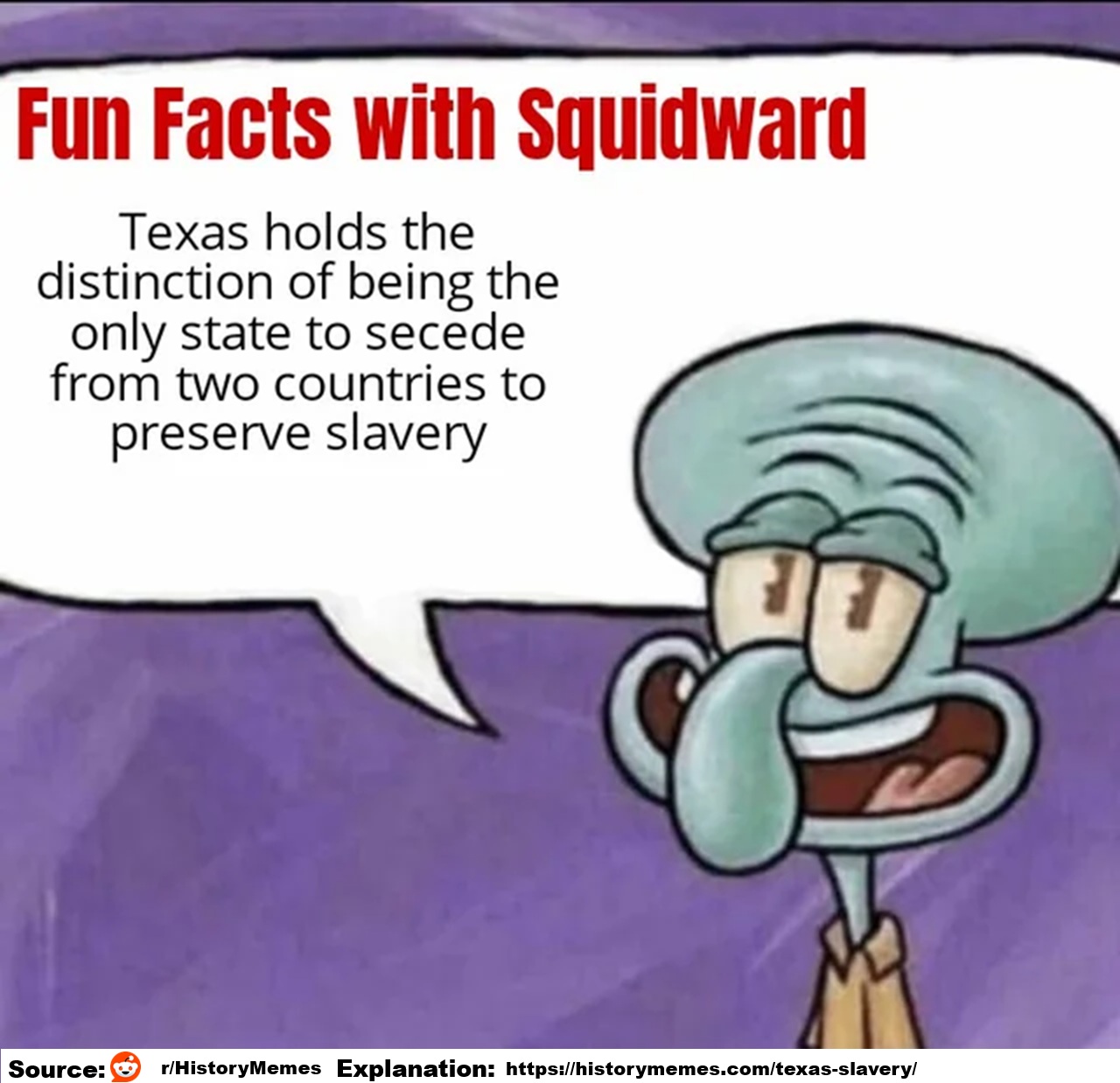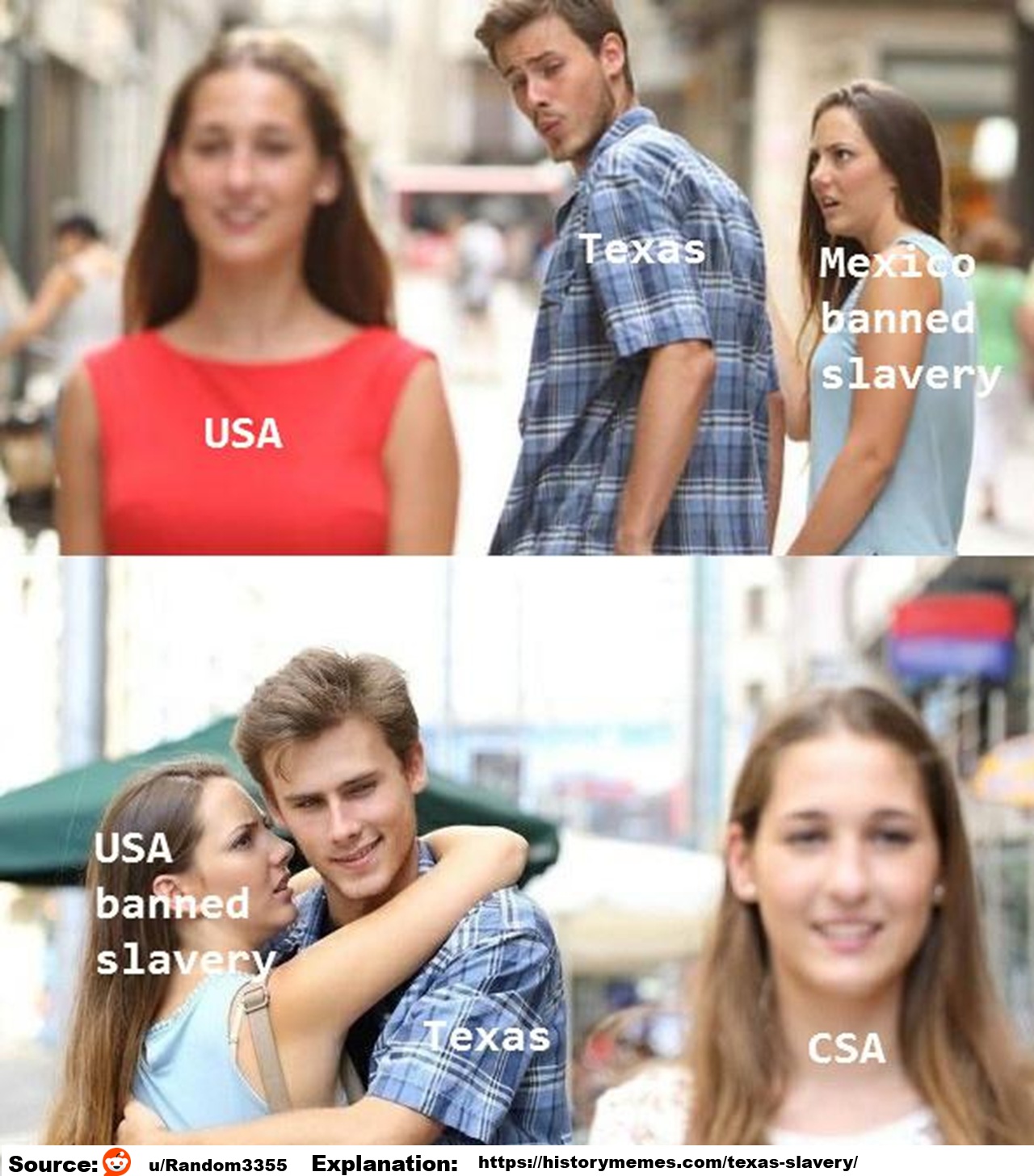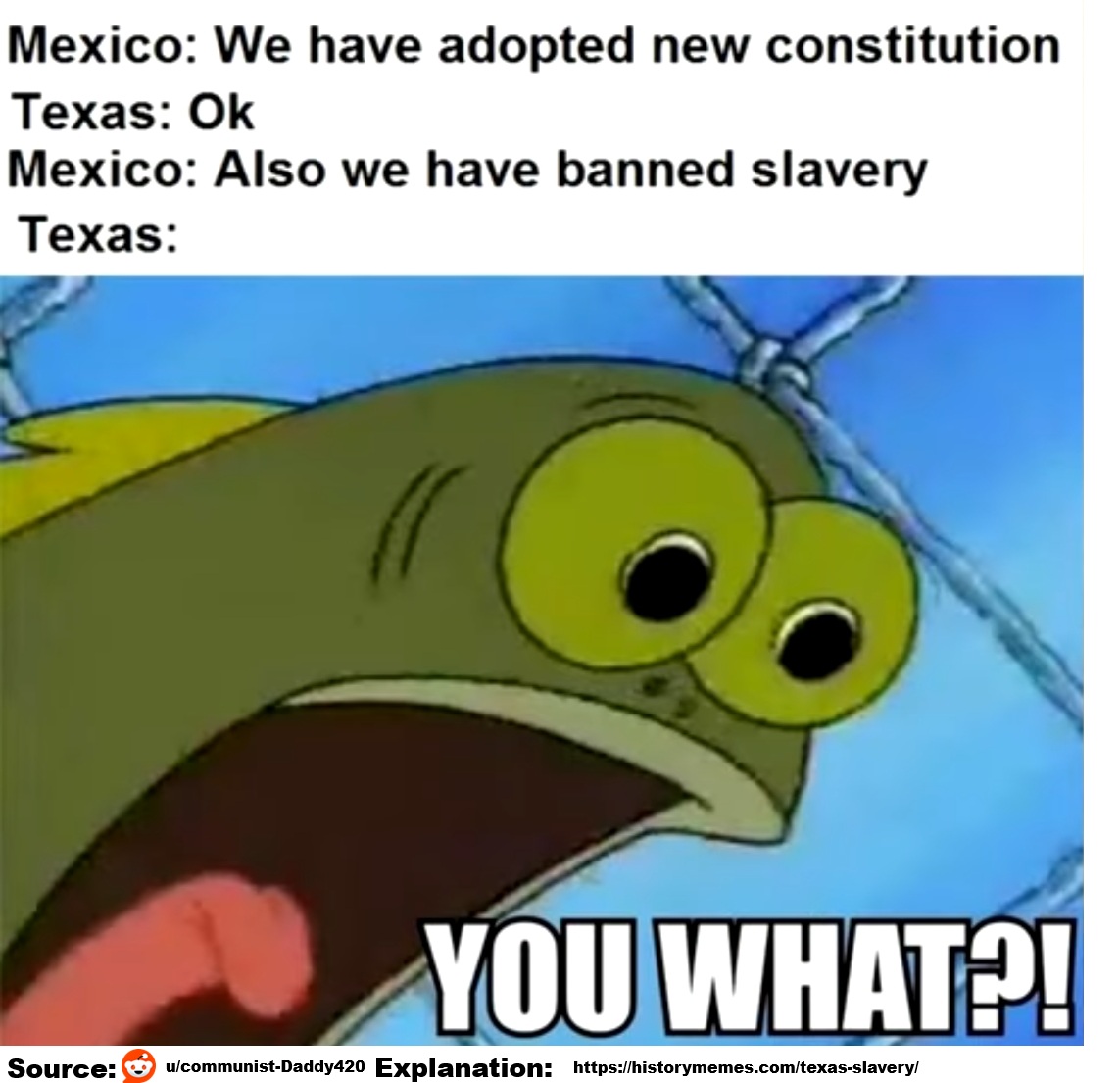
All the memes here relate to Texas rather dubious history with slavery.
Slavery under Mexico
When Mexico won independence from Spain in 1821, it started the process of outlawing slavery.
However, Mexico also wanted to populate its northern frontier (Texas), which was sparsely inhabited and vulnerable to Comanche raids and U.S. expansion.
- The Mexican government allowed Anglo-American settlers, led by Stephen F. Austin, to move in under the condition they became Mexican citizens and Catholics.
- Many of these settlers were from the American South and brought enslaved people with them, even though Mexican law technically prohibited slavery.
Mexico tolerated this for a time, but tensions grew as more settlers arrived with enslaved laborers to grow cotton.
Abolition of Slavery in Mexico and Texas Rebellion (1829–1836)
In 1829, President Vicente Guerrero, himself of mixed African descent, issued a decree abolishing slavery throughout Mexico.
- Texas settlers were outraged.
- The government made temporary exceptions for Texas to prevent revolt, but the writing was on the wall.
- In 1830, Mexico also restricted further U.S. immigration into Texas, further angering Anglo settlers.
By the mid-1830s, these settlers, many of whom explicitly wanted to maintain slavery, saw independence as the only way to preserve their way of life.
In 1836, they rebelled against Mexico, leading to the Texas Revolution.
- The Texas Declaration of Independence (March 2, 1836) condemned Mexico for having “abolished slavery,” and after independence, the Republic of Texas legalized slavery again.
- The new Texas constitution explicitly protected slavery and prohibited free Black people from residing in Texas without legislative approval.
So, Texas left Mexico largely to protect slavery.
Annexation by the United States (1845)
When Texas sought to join the U.S., slavery was again the key issue.
- Texas entered the Union in 1845 as a slave state, after years of resistance from northern politicians who feared expanding slavery’s reach.
- Its annexation helped spark the Mexican–American War (1846–1848), which in turn reopened fierce debates about slavery in the new western territories.
Secession from the United States (1861)
About 20 years later, Texas seceded from the Union to join the Confederacy in 1861, again, explicitly to defend slavery.
The Texas Declaration of Causes of Secession (February 1861) is very clear:
“…in this free government all white men are and of right ought to be entitled to equal civil and political rights; that the servitude of the African race… is mutually beneficial to both bond and free, and is abundantly authorized and justified by the experience of mankind.”
This document repeatedly complains that northern states were hostile to slavery and that the U.S. federal government was failing to protect the institution.
So, Texas:
- Left Mexico to preserve and expand slavery, and then
- Left the United States to protect slavery again.
Aftermath
Following the Civil War:
- Slavery was abolished in Texas with Juneteenth (June 19, 1865), when Union troops enforced emancipation.
- Texas’s postwar politics remained dominated by white supremacist systems for decades, including through sharecropping, segregation, and disenfranchisement.
Books on the topic:
- The Counter Revolution of 1836: Texas Slavery & Jim Crow and the Roots of American Fascism
- The Laws of Slavery in Texas: Historical Documents and Essays
- I Was Born in Slavery: Personal Accounts of Slavery in Texas
More memes:





Leave a Reply